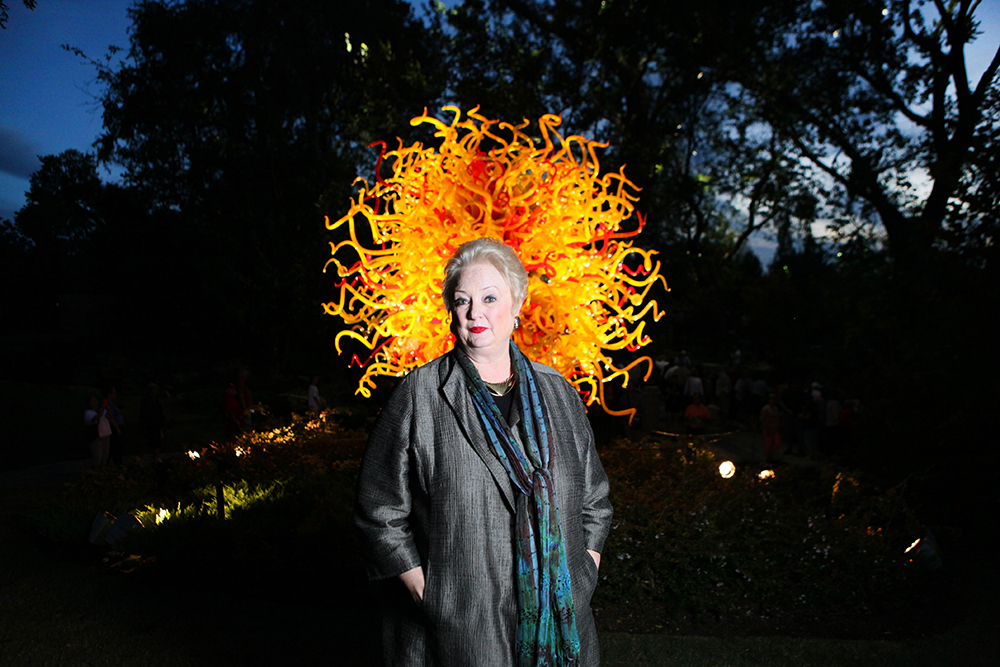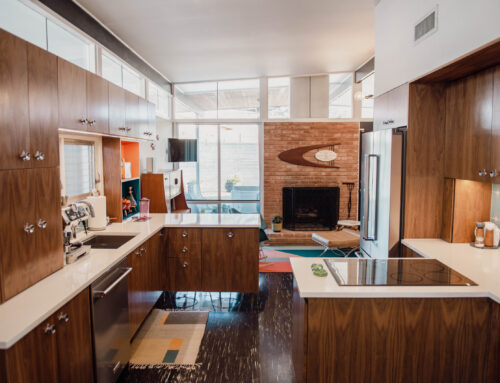The story of Ralph Rogers and Mary Brinegar
The Dallas Arboretum is not often mentioned in the late Ralph Rogers’ extensive list of accomplishments.
Along with the acclaim he receives for founding Texas Industries (TXI) and saving PBS during the Nixon administration, Rogers also is credited with turning around both St. Mark’s School and the Dallas Symphony, turning Parkland Hospital into a top medical institution, and being instrumental in finding the cure for rheumatic fever, from which he almost died in his 30s.
The list goes on. People who knew Rogers describe him as an indomitable force who would not take “no” for an answer. It’s both the reason he was so successful in his many philanthropic endeavors, as well as the quality that garnered him enemies. As chairman of the Dallas Arboretum and Botanical Society, a role that lasted only from 1984 to 1986, Rogers set the tone for the garden’s future and was the driving force in fundraising efforts.
[quote align=”right” color=”000000”]“I feel very sad, because when they made me chairman, they did it not because of my horticultural ability; they thought I could raise enough money to make this dream come true.”—Ralph Rogers in 1988[/quote]There would be no Dallas Arboretum if it weren’t for Ralph Rogers, said the late Robert Hoffman in Rogers’ 1997 Dallas Morning News obituary. Hoffman succeeded Rogers as society chairman.
“He had a vision for the garden, and he understood and appreciated how important it could become for Dallas,” Hoffman said.
Rogers had two natural connections to the arboretum. He was an avid gardener (the garden at his summer home in Maine earned a gold medal from the Massachusetts Horticulture Society as the nation’s best) and his wife, Mary Nell, was Nell DeGolyer’s niece. The Rogers family temporarily lived with the DeGolyers in 1950, when they moved to Dallas.
It was Rogers who purchased the Camp estate on behalf of the society. He didn’t just hand it over, however; the society had to raise the money to pay for it. In a 1978 letter, then-Dallas Park Board president Sid Stahl details a conversation in which Rogers tells Stahl “he felt that if he just gave the property to the Arboretum Society, the society would never do what it needs to do in order to get properly on its feet.” At that point, the city had terminated its contract with the society on the arboretum land because the society had failed to raise the contingent $200,000. Rogers’ purchase of the Camp estate, which the city had been hoping to add to its arboretum land, was a way to get the society back in the game as well as a carrot to dangle in front of the directors.
During his years on the society board, Rogers helped raise $16 million in donations and pledges, half of which he personally solicited from Ross Perot (though $6 million of the $8 million never materialized). Then in the scuttle of the late ’80s, Rogers left the board.
“I feel very sad, because when they made me chairman, they did it not because of my horticultural ability; they thought I could raise enough money to make this dream come true,” Rogers said in a 1988 story in the Dallas Morning News former Sunday magazine, Dallas Life.
The arboretum survived without Rogers, but it wasn’t until 1996 that another visionary came along who would push the arboretum to greater heights. After cycling through four presidents in 12 years, the society board hired Dallas legacy Mary Brinegar, the granddaughter of Dallas Mayor R.L. Thornton, as the arboretum’s president and CEO.
Previous presidents had backgrounds in botany, engineering and business. Brinegar’s expertise was fundraising and managing nonprofits. She didn’t know much of anything about horticulture when she accepted the job, she says.
“When I came here, even the man who helped me with my garden was scared,” Brinegar says, laughing at the recollection.
It didn’t matter. What she didn’t know, she was determined to learn from the garden’s experts. And what she quickly learned is that the arboretum lived and died by its annual Dallas Blooms festival.
“If we had a rainy Blooms, we were in trouble,” says current board chairman Bill Graue.
Brinegar set out to make the arboretum a year-round attraction. A prime example is that the autumn festival that featured the fickle chrysanthemum gave way to a village of pumpkins — a much more dependable and enduring plant that has made the Autumn at the Arboretum festival even more popular than Dallas Blooms.
Brinegar’s aim to make the arboretum “beautiful all year long” created a domino effect of more visitors, more members, more wedding and event bookings, more publicity and more donors. When Brinegar was hired, the arboretum wasn’t known to many people outside of our neighborhood, says Graue, who grew up down the street on Garland Road.
“People didn’t really want to go east of Central Expressway,” he says. “This was kind of a scary place for them. It really wasn’t scary, but it was difficult to get people to come over here. To a very large extent, we’ve given people a reason to see East Dallas. We’ve put East Dallas back on the map.”
The arboretum’s annual budget was roughly $3 million when Brinegar arrived. Nineteen years later, it’s $20.5 million. She attributes the success simply to quality.
“We know bad when we see it; we know exciting when we see it,” she says. “We’re not flip. We don’t do anything quickly here.
“If you wait around long enough, and you get it right, and the quality is just outstanding, people believe in you,” Brinegar says. “They renew their membership because it’s a place you can count on. It’s going to be impeccably clean and beautifully attended to.”
Her reputation among the staff and directors is someone who does everything with purpose and precision. They chuckle about receiving Brinegar’s middle-of-the-night emails and joke about the litmus test for new arboretum employees — take them into the arboretum’s Rosine Hall and ask them to “look around and tell me what Mary would see,” says longtime board member Brian Shivers. Brinegar would spot cobwebs in the corner, a light bulb out, a stain on the wall, “the little details, not just the big obvious stuff,” he says.
When asked directly about her accomplishments, Brinegar deflects the praise onto “the passionate love that people have for this garden and the way so many people have worked together to make it successful.”
Her board knows better.
She was hired the same year her cousin, R.L. “Bob” Thornton III, was elected chairman of the board and began leading the arboretum in restructuring efforts and in fundraising for the Trammel Crow Visitor Education Pavilion.
But Thornton’s most important legacy, Shivers believes, is Brinegar.
“Mary has really turned us all into grownups,” he says.
Brinegar has no plans to leave or retire in the near future, she says, as long as the board wants her to stay.
Graue is grateful she’s planning to stay: If the arboretum lost her, he says, “I’d be run out of the state.”






